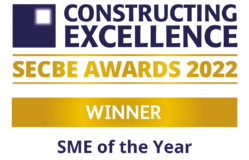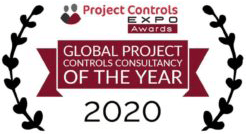What is Earned Value Management?
Peter Drucker who invented modern business management once said, “If you can’t measure it, you can’t manage it”. This is the core concept behind Earned Value Management. By implementing an Earned value management system, the following questions can be answered objectively:
Where have we been?
Where are we now?
Where are we going?
The traditional management environment manages two data points; actual and planned, which show the planned expenditure against the actual expenditure at any given time. With this approach, there is no way to determine the physical amount of work produced against the money spent or whether it’s produced at the originally planned rate.
On the other hand, the Earned Value concept uses three data sources:
- The budget value of work scheduled.
- The actual value of work completed.
- The earned value/budget value of the physical work completed.
Earned Value takes these three data sources and compares them, providing the performance of the project, cost, and schedule. Based on this current performance status, it forecasts the cost at project completion.
It’s vital for project managers to keep an eye on these three data sources during the execution phase of the project:
- What is the budgeted value of the work produced at this point in the Project?
- What is the actual expenditure on the work we have completed at this point in the Project?
- Is the project on schedule?
When Do We Apply EVM?
The EVM method was developed to monitor projects closely throughout the project and to ensure that going over budget, missing deadlines and under-delivering are avoided. This solution works for both large and small projects.
Organisations with a project management setup and a genuine direct manpower time tracking tool can easily implement EVM.
For example:
You have a task to complete in 4 months with a $4,000 budget. The task is evenly divided into 4 months. You plan to evenly spend $1,000 every month. A month later, you have spent $1,000 of your allocated budget as per the schedule. On the outside, everything seems normal, thus, you continue the task as planned. By the end of the 4th month, you had spent all the $4,000 on your task. However, upon reviewing you realise that only 80% of the task was finished! After a detailed analysis, you realise that instead of having 25% of the task completed each month as per the $1,000 budget, you had only completed 20% per month of the same budget. So, after the first month, you were already behind schedule, and this gradually got worse every month!
How does EVM help?
Due to a lack of monitoring of the task’s performance, you reached the end of the task over budget. However, with EVM it’s possible for you to complete more than 25% of the task for $1,000, thereby putting you ahead of schedule.
Why Do We Need EVM?
Simply put, earned value management is a project control technique for tracking progress on a project in terms of cost and schedule. EVM not only allows you to control/track your project performance but also helps you to identify and mitigate problems before they become unrecoverable.
There are multiple advantages to EVM:
- It is a single management control system that provides consistent and reliable project performance data.
- Integrates project scope, schedule, and cost through the work breakdown structure (WBS).
- Can easily track and trace activities that are negatively and positively impacting the project’s performance.
- Assists management in taking proactive measures for underperforming activities.
- Forecasts the project’s final cost based on current performance.
- In the case of going over budget, the “to complete performance index” (TCPI) can provide an acceleration rate to complete the project within budget and on time.
EVM can provide multiple benefits to all industries. However, it’s complex and can be difficult to grasp.
Summary:
Effective project planning is the key to utilising the Earned Value Management method fully. Appropriate data-gathering systems assist in accurately measuring project performance such as the “Schedule Performance Index” and “Cost Performance Index”. These performance indicators convey the status of the project and where we are heading, enabling us to take better decisions to achieve the project objectives. This method supports the project manager and project team to resourcefully manage and deliver the project within the budget and on schedule.
To summarise, we can only understand what the shortest and most cost-effective way is to reach our destination if we know where we are now.
If you would like more information on EVM, get in touch!
You can email us at info@logikalprojects.com
Or call on +61 1300 564 452 (APAC) or +44 (0)20 7404 4826 (UK & Europe)
Or you can use the Contact Us form here.





